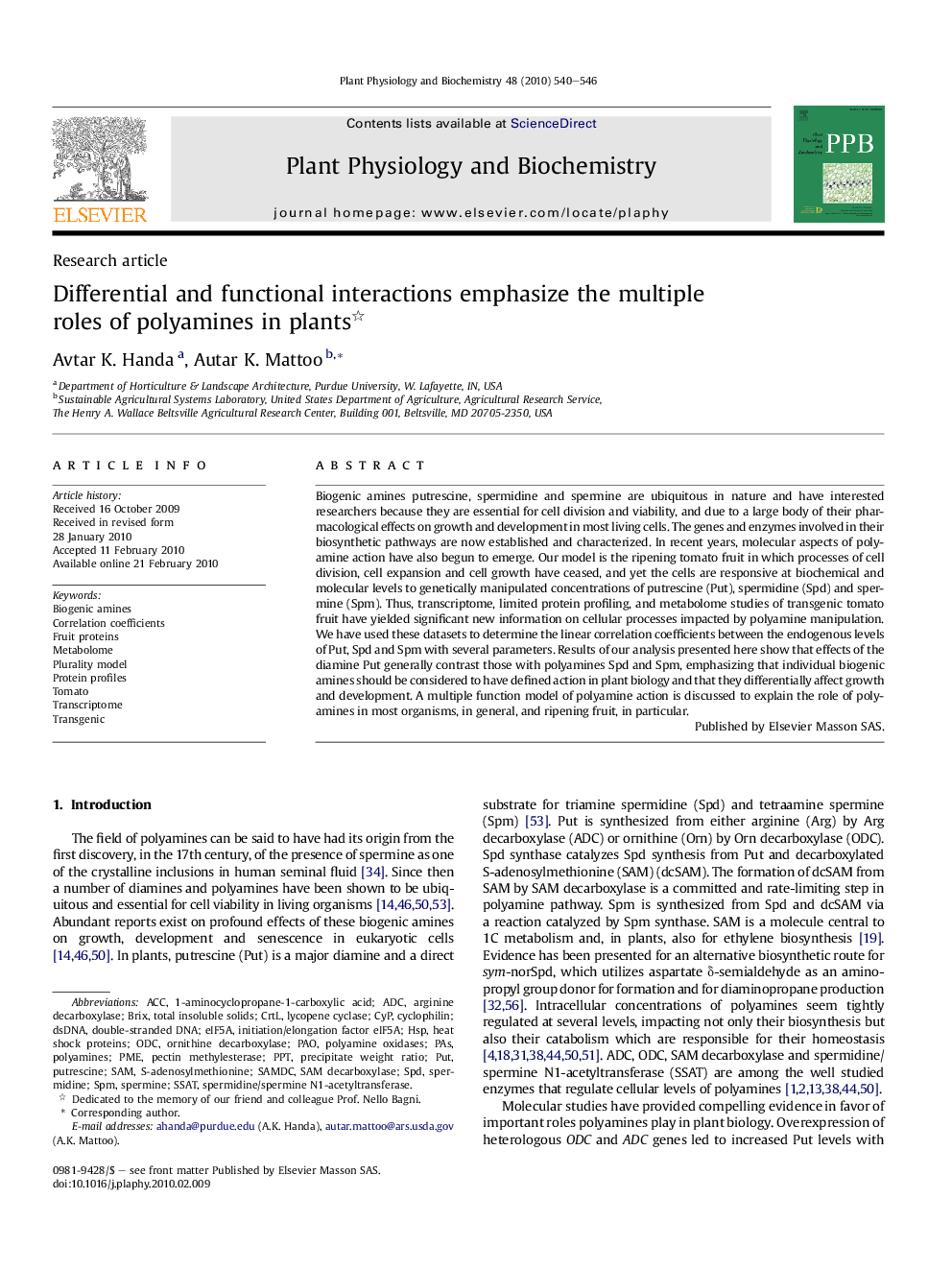| Article ID | Journal | Published Year | Pages | File Type |
|---|---|---|---|---|
| 2015368 | Plant Physiology and Biochemistry | 2010 | 7 Pages |
Abstract
Biogenic amines putrescine, spermidine and spermine are ubiquitous in nature and have interested researchers because they are essential for cell division and viability, and due to a large body of their pharmacological effects on growth and development in most living cells. The genes and enzymes involved in their biosynthetic pathways are now established and characterized. In recent years, molecular aspects of polyamine action have also begun to emerge. Our model is the ripening tomato fruit in which processes of cell division, cell expansion and cell growth have ceased, and yet the cells are responsive at biochemical and molecular levels to genetically manipulated concentrations of putrescine (Put), spermidine (Spd) and spermine (Spm). Thus, transcriptome, limited protein profiling, and metabolome studies of transgenic tomato fruit have yielded significant new information on cellular processes impacted by polyamine manipulation. We have used these datasets to determine the linear correlation coefficients between the endogenous levels of Put, Spd and Spm with several parameters. Results of our analysis presented here show that effects of the diamine Put generally contrast those with polyamines Spd and Spm, emphasizing that individual biogenic amines should be considered to have defined action in plant biology and that they differentially affect growth and development. A multiple function model of polyamine action is discussed to explain the role of polyamines in most organisms, in general, and ripening fruit, in particular.
Keywords
ODCSPMHspACCOrnithine decarboxylaseEIF5ASAMSPDPPTCyPPAOADCSAMDCdsDNApolyamine oxidases1-aminocyclopropane-1-carboxylic aciddouble-stranded DNAsSATarginine decarboxylaseBiogenic aminesS-adenosylmethionineSpermineSpermidineSpermidine/spermine N1-acetyltransferaseBrixTransgenicTranscriptomecyclophilinPMECorrelation coefficientsPUTputrescinelycopene cyclaseMetabolomePectin methylesterasePASHeat shock proteinsProtein profilesPolyaminesTomato
Related Topics
Life Sciences
Agricultural and Biological Sciences
Plant Science
Authors
Avtar K. Handa, Autar K. Mattoo,
